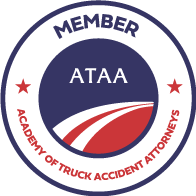Injury Information
Jump to information about the following injuries. Contact Phillip Gilbert, your local Gresham Oregon personal injury attorney, at (503) 465-9600 for injury claims.
CONCUSSIONS/TRAUMATIC BRAIN INJURIES
A concussion is an injury to the brain that results in (usually) temporary loss of normal brain function. It usually is caused by a blow to the head, such as when one’s head “whips” into their headrest in a vehicle crash involving significant impact forces. In many cases, there are no external signs of head trauma. Many people assume that all concussions involve a loss of consciousness, but that is not true. In many cases, a person with a concussion never loses consciousness.
The formal medical definition of “concussion” is a clinical syndrome characterized by immediate and transient alteration in brain function, including alteration of mental status and level of consciousness, resulting from mechanical force or trauma. The term “concussion” is often used synonymously with “mild traumatic brain injury.”
People with concussions often cannot remember what happened immediately before or after the injury and may act confused. A concussion can affect memory, judgment, reflexes, speech, balance and muscle coordination. Paramedics and athletic trainers who suspect a person has suffered a concussion may ask the injured person if they know their name, what month/year it is and where they are.
Even mild concussions should not be taken lightly. Neurosurgeons and other brain-injury experts emphasize that although some concussions are less serious than others, there is no such thing as a “minor concussion.” In most cases, a single concussion should not cause permanent damage. A second concussion soon after the first one does not have to be very strong for its effects to be permanently disabling or deadly.
The skull protects the brain against penetrating trauma, but does not absorb all the impact of a violent force. The brain is cushioned inside the skull by the surrounding cerebrospinal fluid. Despite this, an abrupt blow to the head, or even a rapid deceleration, can cause the brain to contact the inner side of the skull. There is a potential for tearing of blood vessels, pulling of nerve fibers and bruising of the brain substance. The term “coup contrecoup” is sometimes used to describe traumatic injuries to the brain. “Coup” refers to injury to the brain directly under where the traumatic forces were applied to the skull (i.e. to the back of one’s head where it strikes their vehicle headrest), and “contrecoup” refers to injury on the opposite side of the brain, typically caused by the head and brain whipping back in the opposite direction, i.e. when the head “rebounds” or springs back off of the headrest in a collision (the rotational energy being strong enough to cause the brain to very rapidly rotate within, and strike the skull on the opposite side, causing that “contrecoup” injury).
Sometimes the blow can result in microscopic damage to the brain cells without obvious structural damage visible on a CT scan. In severe cases, the brain tissue can begin to swell. Since the brain cannot escape the rigid confines of the skull, severe swelling can compress the brain and its blood vessels, limiting the flow of blood. Without adequate blood flow, the brain does not receive the necessary flow of oxygen and glucose which can lead to a stroke. Brain swelling after a concussion has the potential to amplify the severity of the injury.
A “hematoma” is a blood clot that collects in or around the brain. If active bleeding persists, hematomas can rapidly enlarge. Like brain swelling, the increasing pressure within the rigid confines of the skull (due to an enlarging blood clot) can cause serious neurological problems, and can even be life-threatening. Some hematomas are surgical emergencies. Hematomas that are small can sometimes go undetected initially, but may cause symptoms and require treatment several days or weeks later.
The warning signs of a serious brain injury are the following:
- Pain: Constant or recurring headache;
- Motor dysfunction: Inability to control or coordinate motor functions or disturbance to balance (i.e. difficulty walking);
- Sensory: Changes in ability to hear, taste or see; dizziness; hypersensitivity to light or sound;
- Cognitive: Shortened attention span; easily distracted; overstimulated by environment; difficulty staying focused on a task, following directions or understanding information; feeling of disorientation, confusion and other neuropsychological deficiencies;
- Speech: Difficulty finding the “right” word; difficulty expressing words or thoughts; dysarthric (slurred and/or slow) speech.
One should seek immediate medical attention if any of these symptoms are present.
More information is available here: biaoregon.org
Spine Anatomy
The spine is made up of 24 bones, called vertebra. Ligaments and muscles connect these bones together to form the spinal column. The spinal column gives the body form and function. The spinal column holds and protects the spinal cord, which is a bundle of nerves, descending down the spine from the brain, that sends signals to other parts of the body. The many muscles that connect to the spine help support the upright posture of the spine and move the spine.
The spinal column has three main sections-the cervical spine, the thoracic spine, and the lumbar spine. There are 24 vertebrae, total. The first seven vertebrae form the cervical spine . The mid back, called the thoracic spine , consists of 12 vertebrae. The lower portion of the spine, called the lumbar spine , is usually made up of five vertebrae. However some people have a sixth lumbar vertebra.
A healthy spine has an “S”-like curve when looking at it from the side. This allows for an even distribution of weight. The “S” curve helps a healthy spine withstand all kinds of stress. The cervical spine curves slightly inward, the thoracic slightly outward, and the lumbar slightly inward. Even though the lower portion of your spine holds most of the body’s weight, each segment relies upon the strength of the others to function properly.
Cervical Spine (Neck)
As noted, the cervical spine is made up of the first seven vertebrae in the spine. It starts just below the skull and ends just above the thoracic spine. The cervical spine has a “lordotic” curve, which is, essentially, a backward C-shape. The cervical spine is much more mobile than both of the other spinal regions; think about all the directions and angles you can turn your neck.
Unlike the rest of the spine, there are special openings in each vertebra in the cervical spine for arteries (blood vessels that carry blood away from the heart). The arteries that run through these openings bring blood to the brain.
Two vertebrae in the cervical spine, the atlas and the axis, differ from the other vertebrae because they are designed specifically for rotation. These two vertebrae are the reason your neck can move in so many directions. The atlas is the first cervical vertebra; it’s located directly under the skull. The atlas does not have a vertebral body, but it does have a thick forward (anterior) arch and a thin back (posterior) arch with two prominent sideways masses. The atlas sits on top of the second cervical vertebra, the axis. The axis has a bony knob, called the odontoid process, which extends upward up through a hole in the atlas. Special ligaments between the atlas and the axis allow for a great deal of rotation. It is this special arrangement that allows the head to turn from side to side as far as it can.
The cervical spine is very flexible, but it is also very much at risk for injury from strong, sudden movements, such as whiplash-type injuries. This high risk of harm is due to the limited muscle support that exists in the cervical area, and the fact that this part of the spine has to support the weight of the head (average weight: 15 pounds) which, in and of itself, is a significant load for these small bones and ligaments to bear.
Thoracic Spine (Mid Back)
The thoracic spine consists of the middle 12 vertebrae. These vertebrae connect to your ribs and form part of the back wall of the thorax (the ribcage area between the neck and the diaphragm). The thoracic spine’s curve is “kyphotic;” meaning a C-shaped curve with the opening of the “C” in the front. This part of the spine has very narrow, thin intervertebral discs. Rib connections and smaller discs in the thoracic spine limit the amount of spinal movement in the mid back compared to the lumbar or cervical parts of the spine. There is also less space inside the spinal canal.
In vehicle accident cases, (significant) injuries to the person’s thoracic spine are less common than are injuries to their cervical spine (neck) and lumbar spine (low back).
Lumbar Spine (Low Back)
The lowest section of the spine is called the lumbar spine . This area usually has five vertebrae (sometimes people are born with a sixth lumbar vertebra). The base of your spine (called the “sacrum”) is a group of specialized vertebrae that connects the spine to the pelvis. The lumbar spine’s shape has a lordotic curve shaped like a backward “C”. If you think of the spine as having an “S” shape viewed from the side, the lumbar region would be the bottom of the “S”. The vertebrae in the lumbar spine area are the largest of the entire spine. The lumbar spinal canal is also larger than in the cervical or thoracic parts of the spine. The size of the lumbar spine allows for more space for nerves to move about.
Whiplash
“Whiplash” is an informal term most often used to loosely refer to injuries that one can sustain to their neck (“cervical spine”) in a vehicle collision. Typically, though certainly not exclusively, these injuries are sustained in rear-end and head-on vehicle collisions. The impact forces involved in the collision cause the person’s head, and neck, to “whip” forward and back, or vice versa (depending on the type of collision). As may be obvious, the greater the impact forces are, the more the force is that is applied to the head and neck (some medical care providers refer to these injuries as “sudden acceleration/deceleration” injuries).
The two most common, specific injuries that occur in such a case are strains and sprains. Although insurance companies and the (not so) “independent” physicians they hire to serve as “expert witnesses” in defending personal injury claims like to treat these different types of injuries as being the same, they are not.
A “strain” refers to injury to muscle; typically the stretching and/or tearing of muscle. Generally speaking, these injuries have a decent prognosis; most sprains fully resolve with appropriate treatment over a span of 3 to 12 months. A “sprain” involves injury to one or more ligaments. Ligaments are the tough bands of fibrous tissue that connect two bones together at a joint. There are many ligaments in the human spine, and they allow for most of the spinal rotation (the turning of our head and/or body). When a ligament is stretched or torn, the prognosis for a full recovery is less favorable. This is in part due to the nature of ligament; it is not as resilient as muscle is.
Still speaking in generalities, the pain that someone feels when they have a sprain and/or strain of one or more sections of their spine (referring to the three sections of the human spine: the cervical spine, the thoracic spine, and the lumbar spine) derives from the trauma that the muscle and/or ligament has sustained, i.e. the tearing and/or stretching of those tissues. A sprain can also cause pain if there is ligamentous laxity. This term refers to a stretch-type injury to a ligament. A person can experience pain if one or more levels of their spine become mis-aligned with the adjacent level(s) because one or more ligaments have been stretched to allow the bones (vertebra) to move more than they should.
Other common symptoms that one can experience from a sprain or strain injury include: muscle spasms; headaches; reduced range of motion; reversal of the normal lordotic/kyphotic spinal segment curve; and tenderness.
On occasion, a person who suffers these injuries in a vehicle collision will also suffer a concussion; not infrequently because their head “whips” into their headrest with significant force. Very rarely, someone with concussion-type symptoms can have a much more serious brain injury, such as an intracranial hematoma. As such, whenever there is even a slim possibility that someone has sustained a concussion, they should immediately seek medical evaluation at a hospital emergency room.








